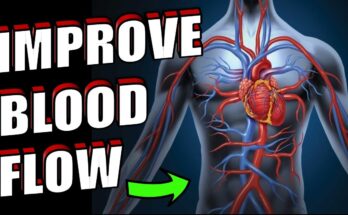Spinal Cord Injury Symptoms: Spinal cord injury (SCI) involves damage to the spinal cord that affects communication between the brain and the body. Understanding the symptoms and causes of SCI is crucial for timely intervention and management.
Recognizing signs such as loss of movement or altered sensation can lead to early diagnosis and potentially limit long-term impacts, enhancing quality of life for those affected. This knowledge is essential for patients, caregivers, and healthcare providers alike.
What is a Spinal Cord Injury?
A spinal cord injury (SCI) occurs when there is damage to the spinal cord that blocks communication between the brain and the body. After an injury, a person can experience a range of symptoms depending on the severity and location of the damage. These symptoms may include paralysis, loss of sensation, and disruptions in bodily functions. This type of injury can profoundly impact an individual’s lifestyle and requires significant adjustments to daily activities.
The Spinal Cord’s Role in the Body
The spinal cord is crucial for several vital functions in the body, including:
- Motor Control: The spinal cord transmits signals from the brain to various body parts to initiate and coordinate movement.
- Sensory Processing: It carries sensory information from the body back to the brain, allowing for sensations like touch, pain, and temperature recognition.
- Reflex Functions: The spinal cord is responsible for reflex actions, which are immediate responses to certain stimuli without the need for brain involvement.
- Autonomic Control: It regulates body systems that operate involuntarily, such as blood pressure, body temperature, and digestion.
Statistics on Prevalence and Impact of SCI
Spinal cord injuries are not only life-changing but also relatively rare compared to other types of injuries. Here are some key statistics:
- Annual Incidence: Approximately 17,000 new cases of spinal cord injury are reported in the United States each year.
- Prevalence: An estimated 250,000 to 500,000 people globally suffer from SCIs annually.
- Demographics: The majority of spinal cord injuries occur in young adults, with a significant percentage of these injuries resulting from vehicle accidents, falls, or sports injuries.
- Long-term Impact: More than 90% of people with spinal cord injuries experience some form of permanent disability, which necessitates comprehensive medical care and life-long adjustments.
Furthermore, advancements in medical research continue to provide hope for better treatment outcomes, significantly enhancing the quality of life for those with spinal cord injuries.
Symptoms of Spinal Cord Injury
Understanding these symptoms is crucial for early diagnosis and treatment, which can greatly affect the patient’s recovery and quality of life. Here, we explore the early signs, immediate symptoms, and chronic symptoms that develop over time with SCI.
Early Signs and Immediate Symptoms of Spinal Cord Injury
The onset of spinal cord injury often presents with some immediate and noticeable symptoms. These early signs are critical for quick identification:
- Loss of Movement: This may include an inability to move arms or legs, depending on the injury level.
- Altered Sensation: Individuals may experience a loss of feeling or a tingling sensation in the hands, fingers, feet, or toes.
- Loss of Bladder or Bowel Control: This includes inability to control urination or bowel movements, which can indicate an acute spinal injury.
- Exaggerated Reflex Activities or Spasms: Changes in reflex movements can be a clear sign of SCI.
- Pain or Intense Stinging Sensation: This symptom is caused by damage to the nerve fibers in the spinal cord.
- Difficulty Breathing, Coughing or Clearing Lungs: Especially if the injury is near the neck, affecting respiratory muscles.
These symptoms necessitate immediate medical attention to assess the severity of the injury and to initiate appropriate medical interventions.
Chronic Symptoms That Develop Over Time
As time progresses, some symptoms may become chronic, presenting ongoing challenges:
- Chronic Pain: This can manifest as neuropathic pain where there is no obvious cause, or as mechanical pain related to physical strain or injury.
- Muscle Atrophy: Lack of use due to paralysis can lead to muscle wasting.
- Pressure Sores: Immobility can cause pressure ulcers, requiring constant care and preventive measures.
- Temperature Regulation Issues: The body’s ability to regulate temperature might be impaired, leading to abnormal sweating or shivering.
- Sexual Dysfunction: Depending on the location of the injury, sexual function can be affected.
- Mental Health Issues: Long-term dealing with SCI can lead to emotional challenges including depression and anxiety.
Variation of Symptoms by Severity and Location
The location and severity of the spinal cord injury significantly influence the symptoms experienced by individuals. For example:
- Cervical Injuries (Neck): These injuries typically result in quadriplegia (paralysis of all limbs) with possible respiratory issues due to impaired diaphragm function.
- Thoracic Injuries (Mid-Back): Often result in paraplegia (paralysis of the lower limbs) with intact arm function.
- Lumbar and Sacral Injuries (Lower Back): Mainly affect the hips and legs, potentially sparing upper body function.
For anyone experiencing or witnessing these symptoms following an incident, it’s imperative to seek immediate medical intervention to mitigate long-term consequences.
Causes of Spinal Cord Injury
Understanding the causes of these injuries is crucial for prevention and rehabilitation. SCIs are generally categorized into two types: traumatic and non-traumatic.
Traumatic Causes of Spinal Cord Injuries
Traumatic spinal cord injuries result from a sudden, forceful blow to the spine that fractures, dislocates, compresses, or crushes vertebrae. The most common causes include:
- Vehicle Accidents: Car, motorcycle, and other vehicular accidents are the leading cause of traumatic spinal cord injuries worldwide.
- Falls: Particularly in older adults, falls from significant heights or even simple slips can lead to serious spinal injuries.
- Violence: Incidents involving gunshots, stabbings, and other forms of assault can directly damage the spinal cord.
- Sports and Recreation Injuries: Contact sports like football, rugby, and extreme sports such as skiing and snowboarding carry higher risks of spinal injuries.
- Industrial Accidents: Work-related injuries, especially in construction and manufacturing, where falls and heavy machinery accidents are more common.
Non-Traumatic Causes
Non-traumatic spinal cord injuries are caused by diseases, conditions, or degenerative changes that affect the spinal cord. Common non-traumatic causes include:
- Diseases: Conditions like cancer, arthritis, osteoporosis, and multiple sclerosis can lead to spinal cord impairments.
- Infections: Bacterial and viral infections such as meningitis or polio can cause inflammation that damages the spinal cord.
- Degenerative Disc Disease: Age-related wear and tear on the spinal discs can lead to a herniated disc that pressures the spinal cord.
- Spinal Stenosis: Narrowing of the spinal canal typically due to aging can compress the spinal cord.
- Blood Clots or Bleeding: Interruptions in blood supply to the spinal cord due to clots or vascular disease can result in spinal cord damage.
However, understanding these causes helps in developing strategies for prevention, immediate treatment, and long-term care that can significantly improve outcomes for individuals affected by spinal cord injuries.
Diagnosing Spinal Cord Injuries
Diagnosing spinal cord injuries involves a detailed evaluation to understand the extent and location of the injury. Here’s how medical professionals typically diagnose SCIs:
Medical History and Physical Exam
- Medical History: The initial step in diagnosing a spinal cord injury involves taking a comprehensive medical history. Doctors ask about the circumstances leading to the injury, any symptoms experienced (such as pain, weakness, or numbness), previous spinal injuries, or other health issues that might affect treatment.
- Physical Exam: A thorough physical examination helps determine the exact areas affected by the injury. During the exam, the doctor will check for signs of trauma, assess motor function, and examine the sensitivity of different body parts to stimuli.
Imaging Tests
Imaging tests are crucial for visualizing the extent and specific location of spinal cord injuries. These include:
- X-rays: Often the first imaging technique used, X-rays can show vertebral (spinal column) problems, fractures, or instability.
- Computed Tomography (CT) Scans: CT scans provide a more detailed analysis than X-rays. They can help detect injuries to the vertebrae, discs, and other structures around the spinal cord.
- Magnetic Resonance Imaging (MRI): MRI is particularly useful for examining the spinal cord itself. It can detect damage to the spinal cord, discs, ligaments, and the presence of any blood clots, herniated discs, or other masses that may be compressing the spinal cord.
Neurological Tests
To assess sensory function and motor skills, neurological tests are performed. These tests help in determining the impact of the spinal cord injury on the nervous system and include:
- Sensory Tests: These tests evaluate the ability to feel light touches, pinpricks, or the distinction between hot and cold.
- Motor Tests: These involve assessing muscle strength and response to stimuli in various parts of the body.
- Reflex Tests: Abnormal or absent reflexes can indicate the areas of the spinal cord that are affected.
However, the combination of medical history, physical exams, imaging tests, and neurological evaluations provide a comprehensive picture, aiding in the accurate diagnosis and appropriate management of spinal cord injuries.
Treatment Options for Spinal Cord Injury
Treatment options are typically categorized into immediate treatments, long-term rehabilitation strategies, and both surgical and non-surgical interventions. Understanding these can help patients and caregivers make informed decisions about care and recovery paths.
Immediate Treatments to Reduce Symptoms and Prevent Further Injury
- Emergency Medical Response: Immediate medical attention is critical. Paramedics and emergency medical teams focus on immobilizing the spine to prevent further damage during transport to a medical facility.
- Corticosteroids: Administering corticosteroids like methylprednisolone shortly after injury may help reduce inflammation around the spinal cord, potentially minimizing damage and improving outcomes.
- Maintaining Vital Functions: In a medical facility, efforts focus on maintaining the patient’s respiratory function, blood pressure, and preventing secondary complications like blood clots or respiratory infections.
- Surgical Stabilization: Early surgical intervention might be necessary to remove fragments of bone, foreign objects, herniated disks, or fractured vertebrae that compress the spinal cord. Stabilizing the spine quickly after injury can significantly improve the prognosis.
Long-Term Rehabilitation Strategies
- Physical Therapy: Essential for improving mobility, strength, and flexibility. Physical therapy helps patients maximize their physical capabilities and learn new ways of performing daily tasks.
- Occupational Therapy: Helps patients develop and regain skills needed for daily living and working environments, focusing on fine motor skills and adaptive techniques.
- Psychological Support: Coping with the emotional and psychological impacts of SCI is vital. Counseling and support groups can aid in adjusting to new life changes and challenges.
- Regular Medical Monitoring: Ongoing care with health professionals to monitor changes in neurological status, manage pain, and address secondary conditions is crucial for long-term health.
Surgical and Non-Surgical Interventions
- Surgical Options: Beyond emergency surgery, further reconstructive surgeries may be needed to address ongoing pain, improve function, or correct deformities. Procedures such as spinal fusion or nerve decompression surgeries are common.
- Non-Surgical Interventions: These include pain management strategies such as medication, nerve blocks, and electrical stimulation therapies. Assistive devices such as wheelchairs, walkers, and braces are also integral to improving quality of life.
- Experimental Treatments: Research into regenerative medicine, including stem cell therapy and neuroprotection strategies, offers hope for future advancements in treating SCI.
However, each patient’s treatment plan is tailored to their specific injury and needs, emphasizing a multidisciplinary approach to rehabilitation and recovery.
Preventing Spinal Cord Injuries
Spinal cord injuries can have severe and lasting effects, making prevention crucial. Here’s a comprehensive guide to reducing the risk of both traumatic and non-traumatic spinal cord injuries.
Safety Tips to Reduce the Risk of Traumatic Injuries
- Wear Appropriate Safety Gear: Whether participating in sports, riding motorcycles, or biking, always wear the recommended safety equipment. For instance, use helmets, knee pads, and elbow pads that meet safety standards.
- Practice Safe Driving: Always use seat belts, avoid distracted driving, and never drive under the influence of alcohol or drugs. Adjust your driving according to weather conditions and traffic laws.
- Secure Work and Home Environments: Ensure that your living and workspaces are free of hazards that could cause falls. Install handrails on staircases, secure rugs to prevent slipping, and keep walkways clear of obstacles.
- Follow Safety Procedures in Sports: Always use proper techniques and follow safety protocols while engaging in sports. Ensure supervision and proper training, especially in contact sports or activities involving heights.
- Educate on Water Safety: Never dive into shallow or unfamiliar waters. Always swim in designated areas and consider swimming lessons to improve water safety skills.
Preventative Measures for Non-Traumatic Causes
- Maintain a Healthy Lifestyle: Regular exercise, a balanced diet, and maintaining a healthy weight can reduce the risk of diseases that might lead to spinal cord issues, like osteoporosis or arthritis.
- Practice Good Posture: Proper alignment while sitting, standing, and lifting can prevent undue stress on the spine. Invest in ergonomic furniture and equipment to support spinal health.
- Regular Health Check-ups: Regular visits to a healthcare provider can help detect and manage conditions that may predispose you to spinal injuries, such as bone density issues or vascular disorders.
- Educate Yourself and Others: Awareness of the risk factors and signs of spinal issues can lead to earlier detection and prevention. Community education programs can be particularly effective.
- Limit Repetitive Stress on the Spine: Take breaks, use assistive devices, and rotate tasks to reduce the strain from repetitive motions or prolonged sitting, which can contribute to spinal wear and tear.
By implementing these safety tips and preventative measures, you can significantly reduce the risk of spinal cord injuries. Awareness and proactive prevention are key to maintaining spinal health and overall well-being.
FAQs about Spinal Cord Injury Symptoms
What are the common symptoms of a spinal cord injury?
Common symptoms of a spinal cord injury include severe pain or pressure in the neck, head, or back, paralysis or weakness in any part of the body, numbness, tingling, or loss of sensation in the hands, fingers, feet, or toes, and difficulty with balance and walking. Urgent medical attention is crucial if these symptoms are present.
How quickly do symptoms appear after a spinal cord injury?
Symptoms of a spinal cord injury can appear immediately following the trauma or develop gradually over hours or days as swelling and bleeding affect the spinal cord. Monitoring for any emerging symptoms is essential after any significant injury.
Can symptoms of spinal cord injuries be temporary?
Yes, some symptoms might be temporary, especially if the injury involves a concussion or swelling that doesn’t result in permanent damage to the spinal cord. However, any symptoms should be evaluated by a healthcare professional to determine the severity of the injury.
What should I do if I suspect a spinal cord injury?
If you suspect a spinal cord injury, it is crucial to keep the injured person still and avoid moving them. Call emergency services immediately. Moving a person with a suspected spinal cord injury can worsen the damage.
Are there different types of symptoms for varying levels of spinal cord injury?
Yes, symptoms can vary significantly depending on the level of the spinal cord that is injured. Injuries to the neck area can affect arms, chest, and legs, potentially leading to quadriplegia. Injuries lower on the spine can impact the legs and lower parts of the body, potentially resulting in paraplegia.
Conclusion
The importance of prompt and effective treatment cannot be overstated. Early intervention can significantly impact the overall prognosis, minimizing long-term disabilities and improving the quality of life for those affected. This makes understanding the warning signs of SCI essential for quick action.
Furthermore, continuous education and awareness are vital. By spreading knowledge about spinal cord injuries and their impact, we can foster a more supportive environment for those affected. This encourages not only individual preparedness but also advances in medical research and treatment methodologies.
In closing, remember that knowledge is power. Educating oneself and others about spinal cord injuries, recognizing symptoms early, and seeking immediate medical care can make a profound difference in outcomes. Let’s remain committed to learning and advocacy, ensuring that those impacted by SCI receive the support and care they need.
References
For further reading on spinal cord injury symptoms and to validate the information provided, consider exploring the following reputable sources. These links offer comprehensive details and insights from leading medical experts and institutions in the field:
- Mayo Clinic – Spinal Cord Injury – Symptoms and Causes: This resource provides a detailed overview of symptoms, potential causes, and diagnostic approaches for spinal cord injuries.
- National Institute of Neurological Disorders and Stroke – Spinal Cord Injury Information Page: Explore extensive information on spinal cord injuries including symptoms, treatment options, and ongoing research for better management practices.
- Christopher & Dana Reeve Foundation – Understanding Spinal Cord Injury: This page offers insights into the life changes and medical considerations following a spinal cord injury, along with patient support resources.
- PubMed Central – Recent Advances in Spinal Cord Injury Research: A collection of peer-reviewed articles that discuss the latest research and developments in the treatment and understanding of spinal cord injuries.
Each of these resources has been chosen for their authority and the depth of information they offer, making them invaluable for anyone looking to deepen their understanding of spinal cord injuries.



